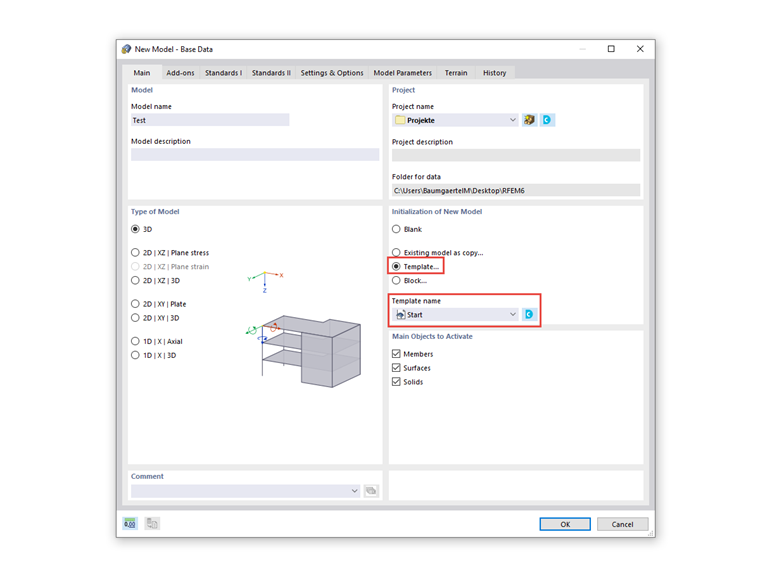With RFEM 6 and RSTAB 9, it is easy and efficient to create templates. You can quickly create a new file and set all desired configurations. This file can then be saved as a template under "File" → "Save as Template".
This way, you can easily create multiple standardized templates. A big advantage of using templates is that you do not need to define the settings, such as frequently used materials, graphical numbering on/off, language settings, and so on, every time you create a new model.
A good template should include the following components:
- Frequently used materials
- Frequently used cross-sections
- Unique hinge definitions that are often used (member and line hinges)
- A list of frequently used loads, including self-weight, dead load, live load, wind, and snow
- A printout report with custom configurations
- Custom standard views of the model: 3D isometric, elevation view in the Y-direction, and so on
Furthermore, the following settings are also helpful:
- Member orientations ON/OFF
- Display of self-weight ON/OFF
- Numbering ON/OFF
- Global coordinate system X, Y, Z (at the origin) ON/OFF
- Colors of rendered objects by
- Deformations of members in colors

